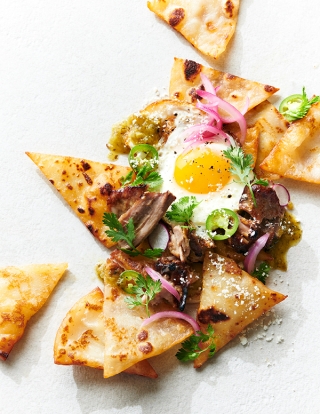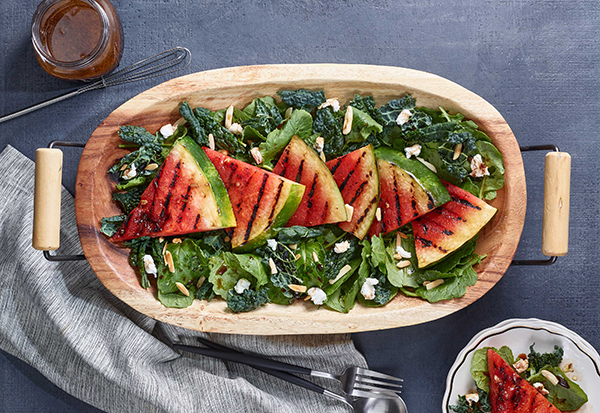
Taste Happens in the Brain (Not Just the Mouth)
31 March 2025Curating a delicious multisensory dish is like reading a riveting culinary novel.
By Lisa Parrish, GMC Editor
Feedback & comments: This email address is being protected from spambots. You need JavaScript enabled to view it.
Eating a specifically curated multisensory dish is like physically walking through a chef’s story that is not told by words but through sight, aroma, texture, auditory information, taste and temperature. The journey weaves sensory inputs with a diner’s experiences creating a memorable dish whose story lingers in the mind long after the plate is cleared.
New culinary students are taught to identify and create flavors such as salty, bitter, sour, sweet or umami. But an application’s beginning flavor is only the introduction to the culinary tale. The full story is revealed when each sense perceives and resonates with an element exposing and expanding a dish’s plot, ending with the diner contemplating the journey just completed. This upper-level culinary instruction requires a library of ingredients and applications at an instructor’s fingertips ready to be checked out for the lesson.
Flavor is more potent when all the senses are triggered
A diner’s judgment of a tasty dish is based upon what that person sees, smells, tastes, feels and hears. Research shows ingredients stimulating the senses create a unique experience that is defined as “enjoyable” or, for lackluster dishes, “forgettable.”
According to neuroscientist Gordon M. Shepherd, the mouth’s appreciation begins in the brain. Charles Spence, Professor of Experimental Psychology at the University of Oxford and author of “Gastrophysics: The New Science of Eating,” said, “I think we all assume that taste comes from our tongues….In fact, all of your senses are involved (in)everything from the color of the plate to the weight of the cutlery in your hands, from the background music to any ambient scent, as well as the lighting and even the softness of the chair you are sitting on.”
The same holds true when considering an application; incorporating all the senses affects a diner’s appreciation for a specific dish. For instance, when an eater hears the sizzle of steak or fajita vegetables, their brain registers the sound and makes a judgment before the plate is served. The brain also registers that something is fresh (and therefore good) when hearing the first bite’s crunch.
Texture, which includes mouthfeel and ingredient temperatures, is one of the most important factors in determining the enjoyability of a dish. Creating a surprising variation of temperatures when building the dish – such as adding both hot and cold elements – wakes up the palate.
The dish’s presentation and visual appeal also influence how the food is perceived. An Ohio State study found that people more enjoyed eating popcorn with chopsticks than by hand – meaning consuming something familiar in a different way can help diners perceive a more enjoyable meal.
As in any good story or culinary tale, specific events or ingredients are not merely random occurrences but are specifically placed to take the diner through a full story from start to finish.
Ingredients and builds that fill the senses and amp up flavor 
Chef instructors can illustrate for students these high-level culinary concepts with accessible and familiar ingredients.
Grilled watermelon is an example of waking up the palate by providing the senses and mind with something unexpected. Grilling watermelon changes the familiar texture of watermelon by firming it up and creating a chewy sensation, it adds an unexpected smokey flavor that pairs perfectly with the more concentrated caramelized sugars, and grilling adds visual appeal with grill marks. Taking this ingredient one sensory-twisting step further, pairing the heated watermelon with a cold kale salad adds temperature variety and interest.
Utilizing scent to pique the brain’s interest can be created using pungent herbs and spices. Hing or asafoetida is an aromatic spice native to Afghanistan and Iran and commonly used in Indian cuisine. The gum resin derived from the roots of the ferula plant has a strong odor and is sometimes called stinking gum. However, when cooked its strong unpalatable smell transforms into what is described as leeks, garlic and meat.
Instructors can use this herb with other aromatic spices like chilies, fried curry leaves and ginger when creating an iconic Mumbai dish, Vada Pao with potatoes. This spiced batter-fried potato dumpling is served on a hot toasted bun with minty-scented chutney.
Adding contrasting mouthfeels in one application stirs not only the taste buds but also the brain. Using potatoes to create crunchy fried tortilla chips is the introduction to the chilaquile’s story. A diner travels through the culinary tale as they encounter tender and crispy pork carnitas, topped with crunchy salsa, smooth crema and hot, gooey fried eggs. The various mouthfeels demand attention until the last bite is consumed and the story is complete.
Teaching culinary students how to create sophisticated flavorful journeys begins with an understating of how a dish uses all the senses – sight, sound, smell, touch and taste. Teach this and watch as the next chef generation authors their own culinary tales.
